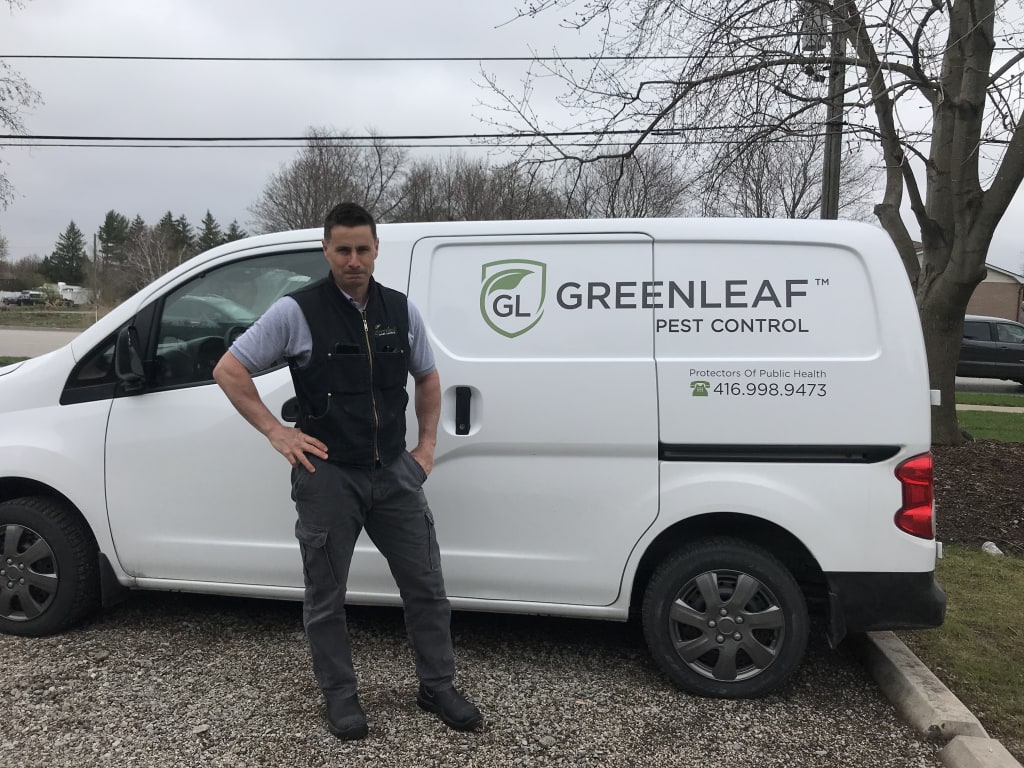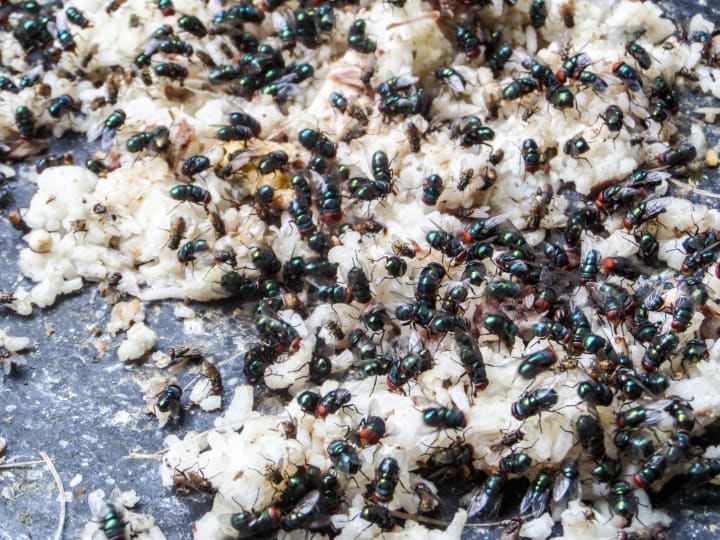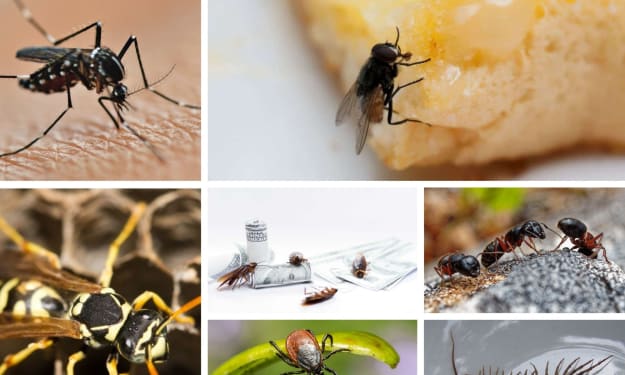INSECT LIGHT TRAPS (ILT’S) – BUG ZAPPERS – FLY LIGHTS
Light Traps

I’ve been in the pest management industry for over 24 years now. I’m one of the lucky graduates of the Environmental Pest Management Program. I not only learned from some great professors but also worked for some amazing companies. Ingrained in my DNA and the soul of GreenLeaf Pest Control is that pest management professionals play an extremely important role in public health. We are protectors of public health!
One of the pests that I dislike the most is flies…..especially when I’m eating! I don’t want to get into a big lecture on how these disgusting insects sponge up fresh moist feces and then vomit on your food. Let’s just say, flies have known vectors of foodborne illnesses, and therefore, pose a risk to the public. Remember the Pepto Bismol commercial “upset stomach…..diarrhea!”

foodborne illnesses, and therefore, pose a risk to the public are known for pests vectors. To keep our food supply safe, food processing facilities and their pest management partners have a clear objective – keep pests out and if they get in, use monitoring and control strategies to eliminate them. This is particularly true for insect light traps (ILTs). ILTs are used to monitor and control one of our highest risk pests in regard to food safety – FLIES.
BACK TO THE TOPIC AT HAND
Gone are the days when the Technician would show up routinely to fog, ULV/ULD, bomb a facility to control flies. We simply know better now and these fogging’s never addressed the root cause of the fly issue. In addition, the over-application of pesticides posed risks to human health and food safety. In a nutshell, the spray and pray model wasn’t the right approach. An integrated, when looking at fly control multipronged approach needed. One key aspect of fly management is the use of Insect Light Traps (ILT’s).
WHY USE INSECT LIGHT TRAPS?
The purpose of using light traps is to monitor the populations of a particular flying insect. Again, these are powerful monitoring tools and will likely not magically fix your fly problem.

TWO COMMON TYPES OF INSECT LIGHT TRAPS (ILT’S)Gluboard Insect light traps
While both styles use light to attract these pests, they differ in what happens to the insect once it enters the trap.

- Glue boards style units capture insects
ILTs that use glue boards, the insect is drawn to the trap’s light and then caught on the glue board’s sticky surface.
- Electrical grid units (AKA Zappers)
ILTs that use an electrical grid, the insect is drawn to the trap and then electrocuted and collected in a tray below.
Insect light traps are designed to offer ongoing monitoring of flying insect populations and provide some level of control. Many types of insects can be attracted to light traps, and a survey of a light trap’s catch tray or glue-board can tell you a lot about what is happening in that facility.
As the name suggests, it’s the special bulbs that attract insects. The blue light emits ultraviolet (UV) wavelengths. Often referred to as “black light,” its wavelength is typically between 300 and 400 nanometers.
WHERE TO USE LIGHT TRAPS
Light traps can generally be used just about anywhere, but a few variables do apply to each situation:
The client’s attitude is important with regard to his or her expectations about how the traps will be used. The traps should not be viewed as control mechanisms, because they probably will not eliminate all of the flying insects in the facility.
Sanitation is also very important in the control effort. Once the device is used to identify the problem and point it out to the client, the traps then become valuable monitoring devices.
In Canadian facilities, there are some general guidelines to use light traps. In general, these regulations have been designed to prevent contamination of food with insects or insect parts (that’s the extra crunch you don’t want).
The size of the light trap can make a difference in its attractiveness and should be considered when purchasing light traps. Certainly, The intensity of emitted light will have some effect on the trap’s attractiveness. As the light UV output decreases, it is less attractive to insects.
ONGOING BULB MAINTENANCE
There are two ways of testing the intensity of the light. One way is to replace the bulbs with new ones at regular intervals. As a general rule of thumb, In peak season May they replaced annually
You can also use a meter that will measure the ultraviolet output of the bulbs and tell you when their output is decreasing.
LOCATION, LOCATION, LOCATION

The most aspect use of light traps is arguably where they placed. Many times, the placement will depend on the actual conditions you are working under. In most cases, you are trying to head off the introduction of these pests, placing them low along walls protected from damage, will work best in capturing flying insects.
At GreenLeaf we are always concerned about a professional appearance. This also goes for the products that we purchase and install at a client’s location. Not all ILT’s need to look so commercial and ugly. Light traps vary considerably in appearance these days. Wall sconces have become an interesting addition to the styles of traps available, and certainly are more aesthetically pleasing than hanging glue sticks or flypaper from ceilings. If you’re a restaurant, QSR or have a client-facing business these lights are ideal for you.
ILT MAINTENANCE AND COSTS
The large industrial fly light traps are manufactured in various sizes and typically emit anywhere from 30 to 80 watts of energy. GreenLeaf only uses Safety Coated shatterproof bulbs in all our ILT’s. Having said that, this is a requirement for all food facilities (Yes, I’m referring to you…..bad pest control companies)!
As mentioned earlier, most manufacturers recommend replacing bulbs once a year. This is a good rule of thumb, but consider the situation where the ambient UV light has changed, or if new lights have been installed in a remodelled area. Either situation can affect the light competition, thus hampering the effectiveness of the fly light trap. Using the UV-A Meter may be a good idea to monitor these situations.
Cleaning and recording trap capture also takes time. Reports should be filed on what is being caught and what implications this may have on increasing sanitation problems or outside influences on the facility. As with any pest control program, the success of a fly control and monitoring program, using fly light traps, is often related to the time spent at each job. As the saying goes…..time is money.
THIRD-PARTY AUDITING STANDARDS
Fortunately, our third-party auditing bodies have very clear standards on ILT placement in relation to food and the impact it has on food safety. Some auditing groups specify how many feet should stand between food and ILTs. For example, #AIB and #Primus GFS state that does not place ILTs within ten feet of any food, whether it’s raw, processed food, etc. On the other hand, #NSF Cook & Thurber say eight feet should be the minimum distance.

Not all auditing groups give you a distance; they are effectively supporting the same standard in using the language “placed so as not to contaminate the food” within their requirements. This is an important placement consideration because ILTs should attract flying insects towards them, and not towards food.
ILT RISKS
There can be a risk of flying insects dying and then falling out of the device. This is particularly true for electrocution-style ILTs, where the electrocution may cause the insect to explode, potentially allowing insect fragments to fall outside of the collection tray. Never placed ITLs near food and never above food and food surfaces. The risk of escaping insect parts emphasizes the need for the distance between electrocuting ILTs and any food source.
ABOUT THE AUTHOR
Daniel Mackie aka Mr. Know Bugs is the VP – Quality Assurance at Greenleaf Pest Control. With over 24 years in the pest protection industry. Mackie is a Toronto, Kitchener / Waterloo, Vaughan and GTA pest control expert. Daniel Mackie is well-known as an industry go-to guy, an innovator of safe, effective pest control solutions, and is a regular guest on HGTV. Mackie, along with business partner Sandy Costa, were the first pest control professionals in Canada to use detection dogs and thermal remediation to eradicate bed bugs. In his free time, he is an avid gardener and beekeeper. According to Mackie: “We are Protects or Public Health”
About the Creator
glpestcontrol
Protect yourself and your family from unwanted pests. For over a decade GreenLeaf Pest Control has provided safe & reliable pest control services in Toronto, Bradford & GTA. Contact us today (416) 998-9473






Comments
There are no comments for this story
Be the first to respond and start the conversation.